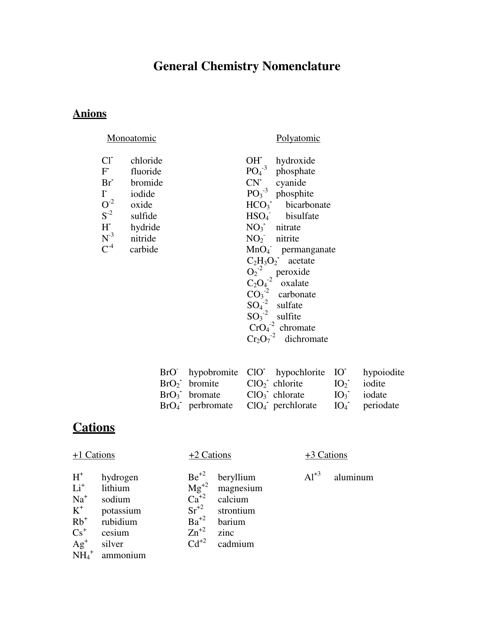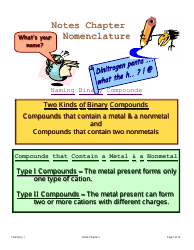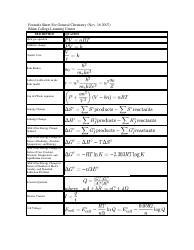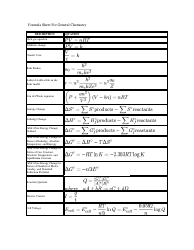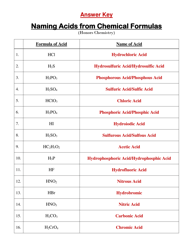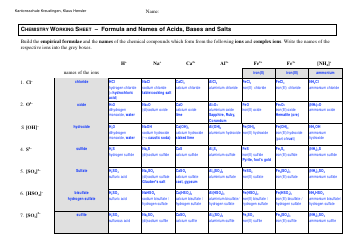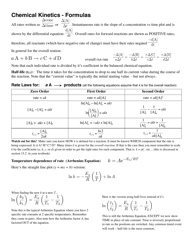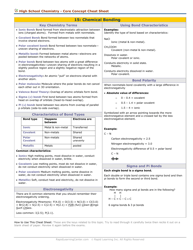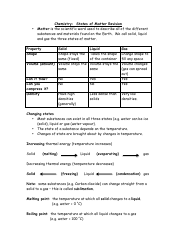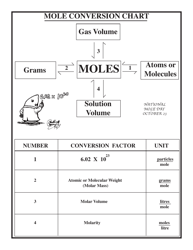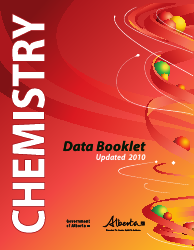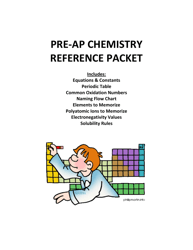General Chemistry Nomenclature Cheat Sheet
A General Chemistry Nomenclature Cheat Sheet is a reference tool that helps students and professionals understand and use the naming conventions for different compounds in chemistry. It provides a quick summary of the rules and guidelines for naming elements, ions, acids, and compounds.
FAQ
Q: What is the purpose of a nomenclature cheat sheet?
A: A nomenclature cheat sheet is a helpful tool for quickly identifying and understanding the names and formulas of chemical compounds. It can aid in studying and memorizing nomenclature rules.
Q: What is nomenclature in chemistry?
A: Nomenclature in chemistry refers to the system of naming chemical compounds.
Q: Why is it important to learn chemical nomenclature?
A: Learning chemical nomenclature is essential for effectively communicating and understanding chemical compounds. It allows scientists and students to identify, classify, and discuss different substances.
Q: What are the common rules for naming chemical compounds?
A: Common rules for naming chemical compounds include using prefixes to indicate the number of atoms in each element, using suffixes to denote the type of compound, and following specific naming conventions for different types of compounds (e.g., acids, salts, organic compounds).
Q: What are some examples of common chemical nomenclature?
A: Examples of common chemical nomenclature include naming compounds such as water (H2O), sodium chloride (NaCl), carbon dioxide (CO2), sulfuric acid (H2SO4), and ethanol (C2H5OH).
Q: Are there different nomenclature systems for different types of compounds?
A: Yes, different types of compounds have different naming conventions. For example, inorganic compounds, organic compounds, acids, and salts each have their own specific rules for naming.
Q: How can I memorize chemical nomenclature?
A: Memorizing chemical nomenclature can be facilitated by practicing naming compounds regularly, using mnemonic devices or visualization techniques, and referring to cheat sheets and study guides for reinforcement.
